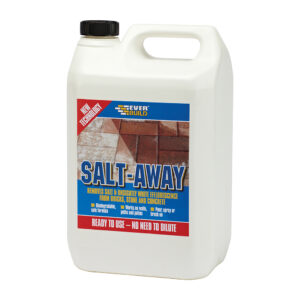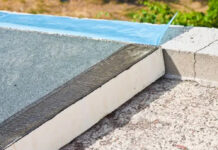If the brick, stone or concrete outside your house is covered in white stains, it might be efflorescence caused by a reaction of the salts used to make mortar, brick and concrete with moisture and air. Moisture trapped in these materials will gradually escape and evaporate. As it does so, the moisture will leach some of the salts from these materials, exposing them to air and leaving behind white stains. This is particularly likely on recently laid bricks and cement.
This by itself doesn’t present an actual threat to the integrity of these materials but it can look dreadful. However, there’s no reason to be stuck with it, when you can just get it off with handy salt-remover products like Everbuild’s Salt-Away Salt Remover. Note that Salt-Away should never be used with pigmented bricks, mortar or concrete.
How to use Salt Remover
You will need:
- Safety gloves and safety goggles
- Everbuild Salt-Away Salt Remover
- A bucket of water or a hose connected to fresh water
A litre of Everbuild Salt-Away Salt remover can cover up to 8m², though if the surface is particularly non-porous you can get up to 10m². Salt-Away doesn’t need to be diluted, and can be used right out of the can or with a handy spray bottle that’s particularly useful for cleaning brick walls. Before you go into the full cleaning process use a small portion of Salt-Away on an inconspicuous part of what you’re cleaning to make sure that it isn’t attacking the actual material.
First, pour some water over the affected area. After this, pour some salt remover over it. Try to make sure that as little salt-remover touches other plants or materials as possible. Leave it for ten minutes, then use more water to wash it away. If stains remain you may need to repeat the process until the stains are removed.







